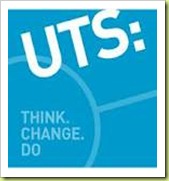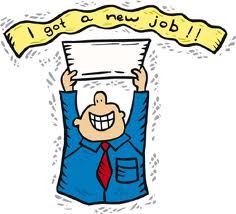Ok…. in my last post I talked about how I found a job, well, actually started writing about it, but I never finished it, so this is the second and last part on how I found my full time job.
Continuing…
4.- The interview:
The day of the interview arrived, Thursday 3 May. I had prepared everything during the previous days. I also went to the place where the interview was a couple of days before just to know for sure where it was so I wasn’t going to be late.
That morning, Ale, a friend, went to my place and helped me with lunch (bought sushi and brought it home hehehe), talked with me in English for me to be a bit more fluent, and came with me to the place of my interview. We arrived at Central at 2pm (my interview was at 3), and sat until 2:35 in a nearby coffee shop, talked for a while and had a chamomile (for the nervousness).
I arrived at 2:45 at the Dean’s Unit (always show up for an interview 15 min before, not more than that), sat for 5 minutes there until the Head of School, Heather, came out, introduced herself and invited me to follow her. While walking she said: “We will have about 30 minutes to talk”… Meaning: the interview was going to last half an hour.
We arrived at a conference room, where three other people were: the Director of the program in Urban Planning, the Director of the research centre “Centre for Contemporary Design Practices” and one leading Senior Lecturer. I sat down and the interview formally started.
They went directly to the point, so the questions were really focused on their selection criteria. What did they ask me (you could use them and relate them to your own work field after some “adaptations") and what did I answer (a tiny summary of the answer) – remember that all the answers are CLOSELY related to the job ad and the selection criteria:
1.- Tell me three strengths you have and how can they relate to the Urban Planning Program? What can you bring to the program?
I am flexible enough to adapt to different multidisciplinary backgrounds and to work with different projects and assignments at the same time.
Since I am a non-English background lecturer I can relate with the needs of non-English background students, and help them understand more easily the subjects we are discussing.
I am really organised and a good planner, which is appropriate in lecturing and researching when trying to achieve goals such as publications.
2.- Tell me about a time you had a problem working in a multidisciplinary team; and what do you think is the greatest challenge in working in multidisciplinary teams?
I described a STAR response:
Situation: In my last job in a participatory design meeting a social worker was encouraging the community to make more demands, creating a disruption in the design process.
Task: I had to control the situation, neutralise the social worker and make the participatory design process to continue smoothly.
Action: I assigned one of the team member to continuo with the design process. I took aside the social worker, explained to him what we were doing and how he could work with us, which he fully understood.
Result: After the quick discussion the social worker apologised, got in track with what we were doing and collaborated with all. In the end, we successfully finalised the participatory design process, in which both the community and the technical teams were happy with the proposed house. [always a happy and positive ending].
In conclusion the most challenging thing about working in multidisciplinary teams is for each member to fully understand what the other professionals are doing in the project.
3.- Do you have a specific research area and focus? Because I see here in your resume that you are finalising Psychology.
For this answer I asked if I could tell a bit about myself and my professional development because it related to my research focus. (Always ask for feedback)… they said “ok, of course”, and they I started telling on how since my master I always cared about designing for people, and after that working in a research with environmental psychologists and how that was vital for me to define my working interest. So, I studied psychology to get a better understanding on the processes relating the human being and their built environment.
Since all that, my research interest is the relationship between culture and cultural expressions and the built environment, specially the public space.
4.- Tell me about you teaching approach and what do you think it is the challenge in teaching nowadays?
My teaching approach is student-centred… and the challenge nowadays is to jump from a traditional approach where the teacher is the expert to an more equalitarian education where every person in the class contribute to the learning experience.
5.- When are you finalising your PhD?
In the last trimester of this year. [btw, I have to work HARD to achieve that, but now I just HAVE to, and I WILL].
6.- If you were the chosen candidate, when would you be able to start?
I am currently available, so I could start whenever it suits the institution.
…………………………………………………………………………………………..
After that they asked me if I had any questions, and that my friends is THE MOST IMPORTANT PART OF THE INTERVIEW. Why? Because there you can not only show that you’re interested to get to know more about the position, but also it’s the opportunity to demonstrate what you researched about the company / university.
In my case I asked three questions:
-
I read on your website that you have three postgraduate courses and that in two of them you have sustainability, urban design and planning theories courses. Is the lecturer position related to any of those subjects?
-
I also got to know that you have several research centres in the Faculty of Architecture, Design and Building. Would the chosen candidate be able to affiliate to any of those centres? How does research work here at UTS regarding that?
-
What are the next steps in the selection process?
To the last question they answered they were going to take a few days to review their notes from the interview process and the reference letters.
The interview lasted for 20 minutes in total. So I left happy about it, but with just one thing on my mind: they didn’t like me so it ended really quickly or they were dazzled by me and they didn’t need more time to make up their mind to hire me.
5.- The call:
The next morning at 8 am, I wrote an email to Heather to thank her and the panel for the interview… and at 8:30 I got a call on my mobile that I couldn’t get at the time…. As soon as I could, I listened to the voice message (it was Heather) and I called her back right away.
She said: “Hi Gabriela, I am calling regarding your interview yesterday. We thought it was really great and we are quite impressed with your teaching experience and your research background, so we’d like to offer you the job”.
As you can imagine I started jumping of happiness all over the unit!!!!!
We talked for a few minutes and arranged a meeting the following Wednesday.
6.- The contract and beginning to work:
This week HR sent to me by email and post my contract package. So I am officially contracted by UTS as a Lecturer in Urban Planning… well, actually I’m still in the process of it, filling out all the forms and getting to understand about UniSuper (which manages academic staff’s superannuation).
I’m starting late June, so I have enough time to prepare for classes, which start in August.
Despite that, I already had a work meeting with Heather and next week I’m going to attend as a juror to the pre-final presentation of “Group Project A: Urban Renewals” (one of the courses I’m teaching next semester). I’m really looking forward to that.
And as you imagine: I’m really excited and happy about my new job.
To finalise this post, I’d like to make a balance of this three months here and the things I said I should have already done by now:
-
Start the skillmax course: started, finished it and found it really helpfull.
-
Elaborate my portfolio: also did it… I finished it for my UTS interview (because they asked for professional practice experience), and didn’t use it. However, I don’t regret one bit investing time in this task.
-
Work on my thesis: haven’t done that jet… but going to start really soon… at most Monday next week…. full steam ahead!!!
-
Look and apply for jobs on a daily bases: didn’t do that either… Instead I focused on giving the best of me in my tutorial at UNSW and in applying the best I could for jobs that fit me.
-
Look for a place to move: did that!!! I have to write the post about it. However I’ll give you a little glance of that… I live a lot closer to the city, where I can ride a bike almost everywhere (I will ride to go to UTS), and I live with the most amazing czech girl.
-
Socialise with my friends here: ok… doing that!!!! hahahahaha…. every time I can.
-
Buy some things for when I move: did that… thankfully my roomie had lots of stuff so I didn’t have much to buy.
-
Go to yoga classes: did that, but right now I’m waiting to start at UTS, because the have a Fitness Centre (right across the street from my office) that offers yoga classes, and that have really good prices.
That’s it for now…. it’s been a really long post so far  … hope you enjoyed it.
… hope you enjoyed it.


